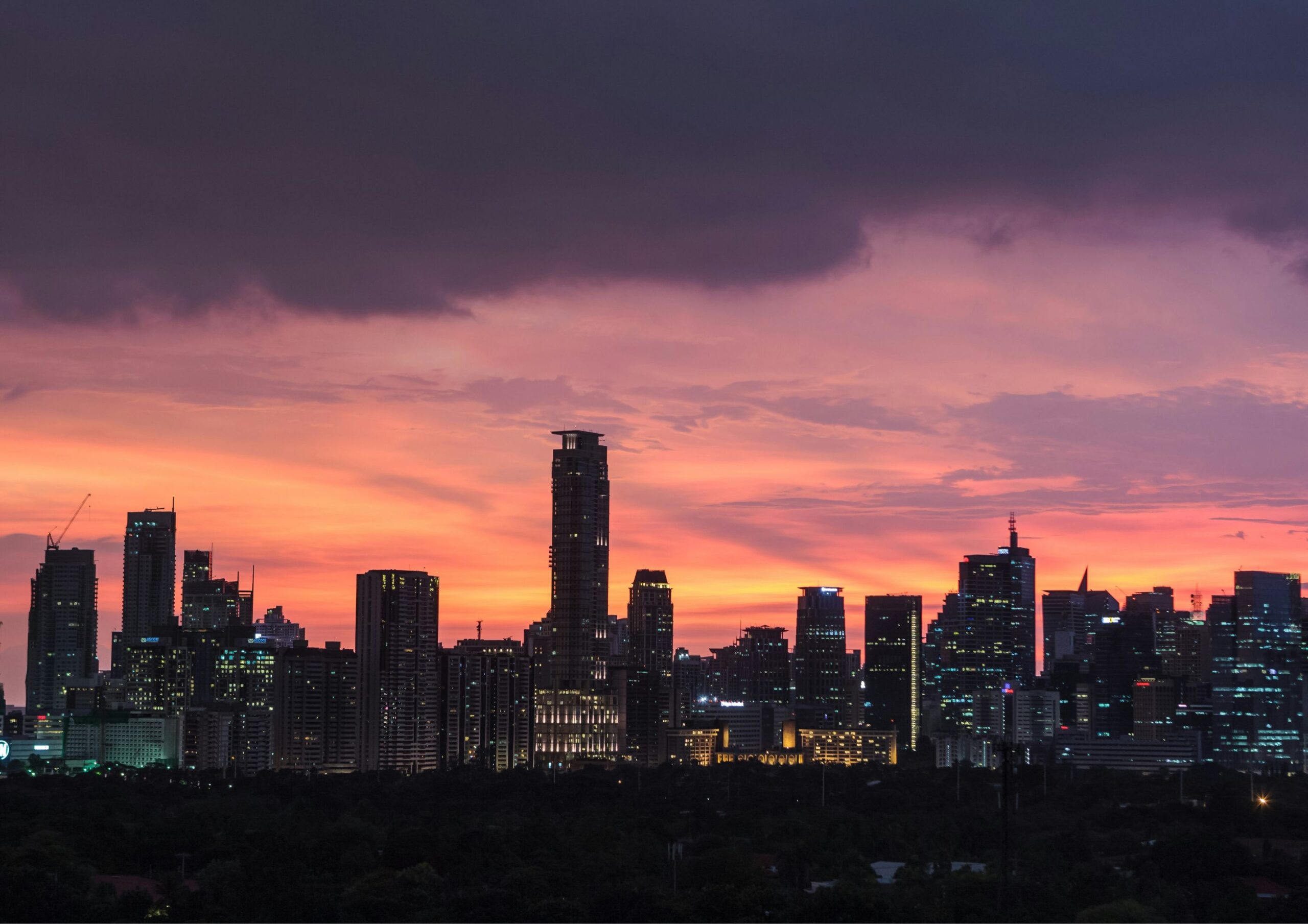
The Battle for the Tallest Building in the Philippines
The skylines of the Philippines boasts its own blend of unique architectural designs infused with state-of-the-art engineering. Here, we delve deeper into the country’s architectural journey, presenting a list of the Philippines’ tallest buildings. As developers push limits, their projects continually move closer to the heavens.
From the numerous business districts of Metro Manila to the growing cities across the archipelago, these structures are symbols of economic progress and industrial strength. We explore the pros and cons of skyscrapers and trace the history of the tallest buildings in the Philippines.
History of the Tallest Buildings in the Philippines

It all began with the completion of the Manila Hotel in 1912. Although not a skyscraper by modern standards, it was one of the first buildings to dominate the Manila skyline. However, the first building officially considered a skyscraper was the Insular Life Building in Makati. Completed in 1962, it was considered the tallest building in the Philippines at the time, standing at 10 stories high. This marked the beginning of Philippine cities’ vertical expansion.
The evolution from the Insular Life Building to today’s towering skyscrapers reflects the Philippines’ growing economic stature and architectural ambition. Beyond being tall structures of steel and glass, each new skyscraper represents the country’s resilience, creativity, and forward-looking vision.
Pros and Cons of Skyscrapers
In densely populated urban areas, skyscrapers maximize the use of limited land, accommodating more people and businesses within a smaller footprint. Furthermore, skyscrapers push the boundaries of engineering and design, contributing to technological advancements and architectural beauty.
On the flip side, skyscrapers require significant resources for construction and operation, contributing to carbon emissions and energy consumption. They can exacerbate the urban heat island effect, leading to higher temperatures in cities. And finally, high-rise living can sometimes lead to a sense of isolation among residents, affecting community interaction.
The Challenges of Going Vertical
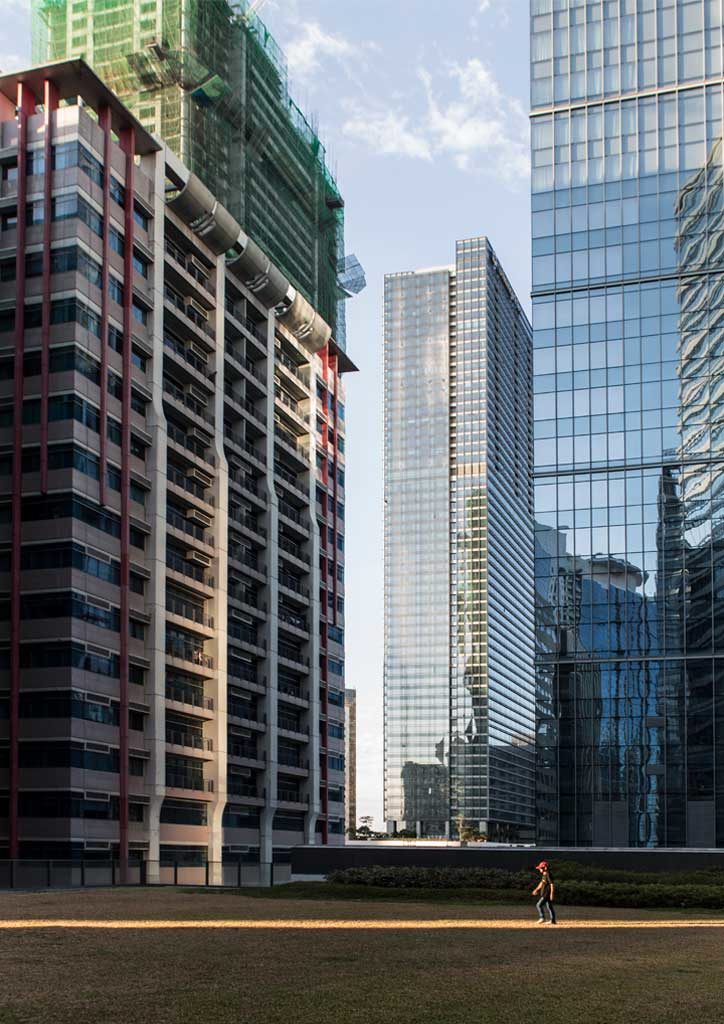
The Philippines faces unique challenges in constructing skyscrapers, primarily due to its geographical and socio-economic context. Located in the Pacific Ring of Fire, the Philippines is prone to earthquakes, requiring advanced engineering to ensure building safety. Frequent typhoons demand robust construction to withstand high winds and heavy rainfall. And the cost of constructing earthquake and typhoon-resistant buildings can be prohibitive.
As you’ll notice, the tallest buildings in the Philippines mostly peak at around 250 meters, facing a unique set of constraints that are not solely architectural, but also geographical, regulatory, and economic in nature. Several key factors influence the height limit for skyscrapers in the Philippines.
While there’s no single law or regulation that caps building heights at 250 meters, a combination of factors related to safety, economics, and practicality play a crucial role. Advances in construction technology and changes in regulatory frameworks may influence future trends in building heights.
There are airspace restrictions in place to ensure the safety of air travel. Buildings within certain areas, especially those near airports like Makati and BGC, are subject to height restrictions to prevent interference with flight paths. Municipalities and cities also have their zoning ordinances that may limit building heights based on various considerations, including urban planning goals, infrastructure capacity, and the preservation of historical sites.
Reaching New Heights
The following edifices have all claimed the title of tallest building in the Philippines during their lifespan. They continue to adorn our urban skylines with their impressive feats of height and engineering. These landmarks serve as reflections of continuous progress and the ever-increasing demand within our urban environments.
Horizons 101 Tower 1 – 186 meters
An honorable mention, Tower 1 of the Horizons 101 holds the title as the tallest building outside of Metro Manila in the country. Developers Taft Properties Development designed this condominium complex to have 2 towers in total. Tower 1 reaches a height of 186 meters with 55 floors, while Tower 2 stands at 168 meters with a total of 46 floors. The name Horizons 101 derives from the total number of floors in both towers, summing up to 55 + 46 = 101.
Robinsons Equitable Tower – 175 meters
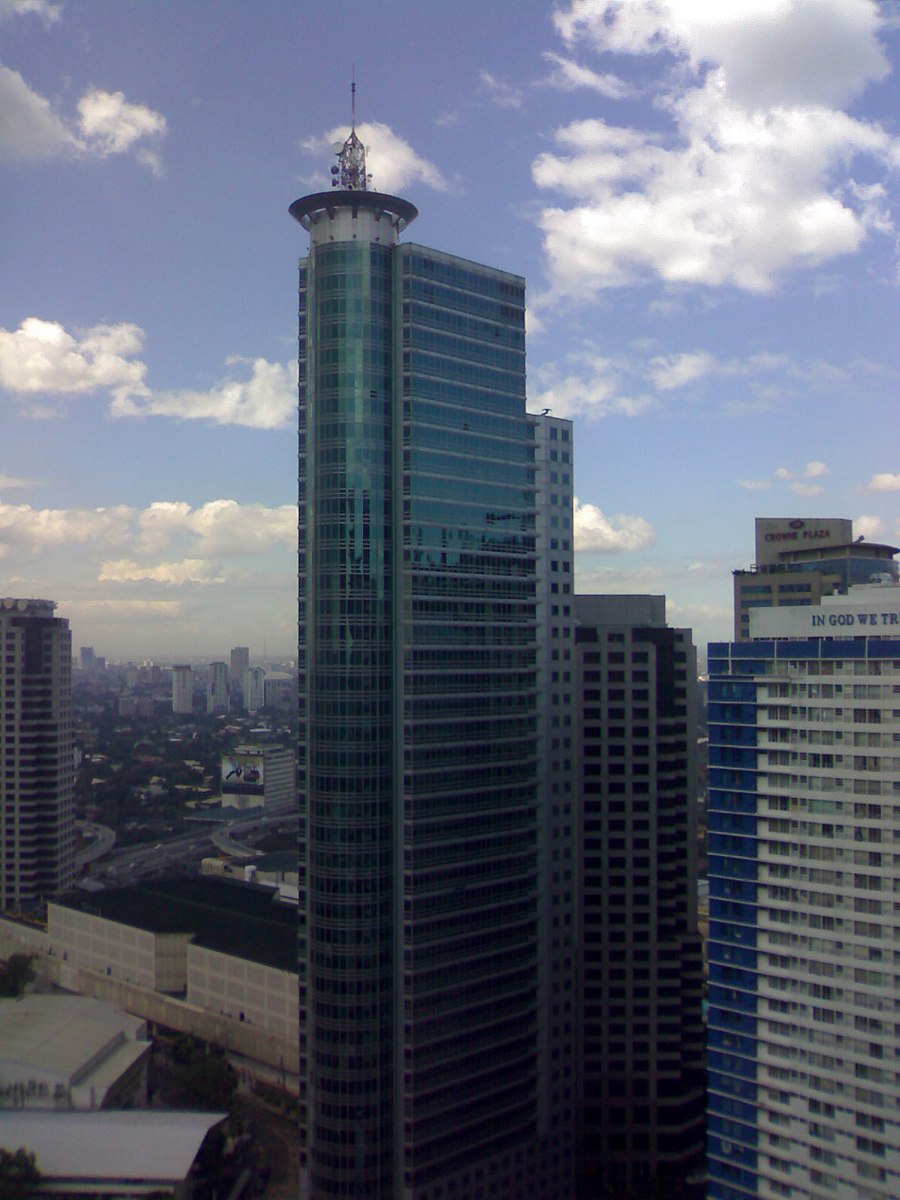
Robinsons Equitable Tower briefly held the title of the tallest building in the Philippines from 1997 to 1998. It reached completion in 1997 and stands at 175 meters (574 feet) tall. Architectural firm Hellmuth, Obata + Kassabaum (HOK) master planned the building, while Philippine architectural firm W.V. Coscolluela & Associates designed it. The original plans were for a 40-story building based on the Robinsons Galleria Complex. However, it underwent a change in design and became a taller office building.
The building’s exterior features green-shaded aluminum high-performance glass curtain walls and punched windows. A sleek cylindrical portion of the structure sits along the corner of ADB Avenue and Poveda Drive. A noticeable rooftop crown, along the rounded edge of the building, breaks the monotony of the building’s form factor.
Rufino Pacific Tower – 200 meters
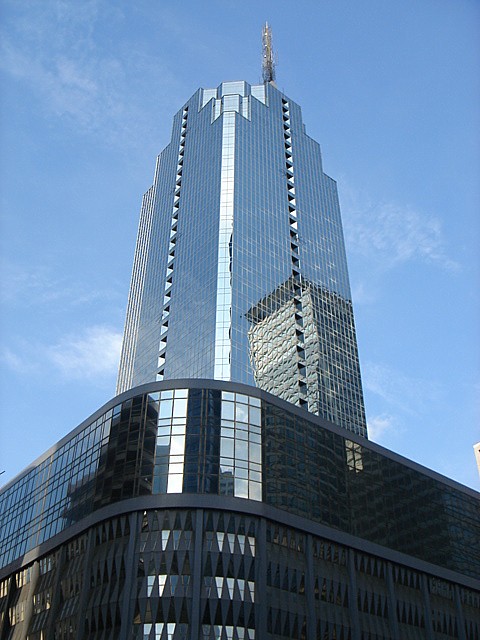
Rufino Pacific Tower, more commonly known as Rufino Tower or Rufino Plaza, was the tallest skyscraper in the Philippines from 1994 to 1997. It retains its status as the tallest steel-framed building in the country with 41 stories that measure up to a total of 161 meters. Including its eight-story radio tower, the building reaches a total height of 200 meters. The original building on the site, V.A. Rufino Building, now serves as the new tower’s podium.
The building features an all-glass design made with double glazed windows. Materials such as natural stone, glass, and metal encase its interiors. It hosts Little Green Hub, Makati’s first “green & boutique” business center, which caters to start-up and early-stage companies.
Petron Megaplaza – 210 meters
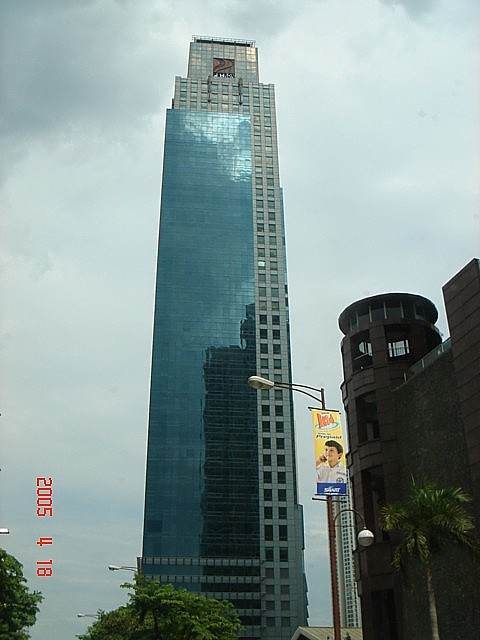
The Petron Megaplaza previously held the title as the tallest building in the Philippines until the PBCom Tower was topped-off. American architectural firm Skidmore, Owings & Merrill, LLP, designed the building. Megaworld Corporation developed and owns the Petron Megaplaza. The building stands at 45 stories tall, 210 meters from the ground, and is currently the 9th tallest building in the country as of this writing.
The facade contains a wide curtain of glass contrasted by a sleek set of windows that extend throughout the building’s vertical axis. Furthermore, the topmost floors of the building are of a smaller footprint which adds a play of depth to the buildings. The structural design of the structure was planned by local engineering firm Aromin + Sy & Associates and Arup, an international engineering company. Construction was undertaken by D.M. Consunji, Inc., one of the largest general contractors in the country.
PBCom Tower – 259 meters
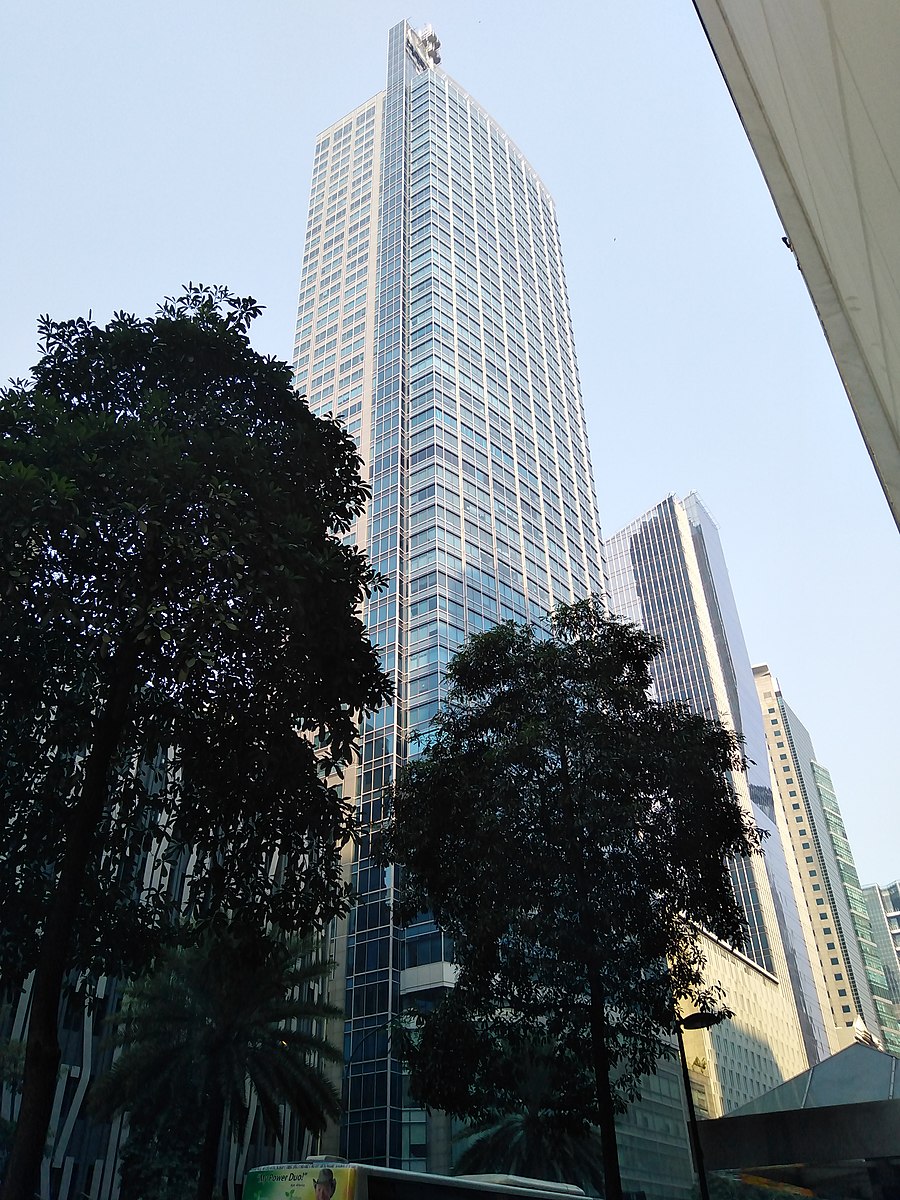
PBCom Tower, more commonly known as The Philippine Bank of Communications Tower, holds the official ranking as the second tallest building in the Philippines. It held the title of the tallest building in the Philippines for 16 years. Standing at a total ground to architectural top height of 259 meters, it comprises 52 storeys, including an 8-level radio tower.
GF & Partners Architects, a local architectural firm, collaborated with international architects Skidmore, Owings & Merrill, LLP, to design the building. Samsung Construction Company Philippines, Inc., handled construction in 1997 and finished the project in 2000.
The PBCom tower’s design includes a multitude of building technologies and features. The use of tinted insulation vision glass controls heat and sound. The full height openings and wide panels provide full-height glazing that frame spectacular views of the cityscape. Green spaces, such as a landscaped garden within its podium, add an element of nature to contrast against this towering structure.
Metrobank Center – 318 meters

Taking the number one spot on our list, Metrobank Center is currently the tallest building in the Philippines as of this writing. The building’s pinnacle height reaches 318 m with a roof height of approximately 259.1. Federal Land revealed the plans for this project back in March 2011 as part of their Grand Central Park mixed-use complex. It took 5 years to complete the skyscraper.
Hong Kong based firm Wong & Ouyang, along with Casas Architects, designed the Metrobank Center. Engineering firm Arup handled the wind, structural, and seismic engineering of the building, devising a damp outrigger system for seismic and wind resistance. Concrete outrigger walls were installed on the Metrobank Center’s two mechanical floors.
The Metrobank Center connects with the Grand Hyatt Residences, a 45-storey condominium skyscraper, through a common podium. The Grand Hyatt Manila occupies the top 25 floors of the building. It features 461 guest rooms and hosts three main restaurants: The Grand Kitchen, No. 8 China House, and The Peak. Another residential tower in the complex is the 50-storey Grand Hyatt Residence South Tower.
The race to reach the sky redefines our urban living and working spaces. These skyscrapers are symbols of the Philippines’ economic growth, architectural prowess, and vision for the future. As the country’s skyline continues to evolve, so too will the ambition and innovation of its architects and developers, pushing the boundaries of design and technology.


